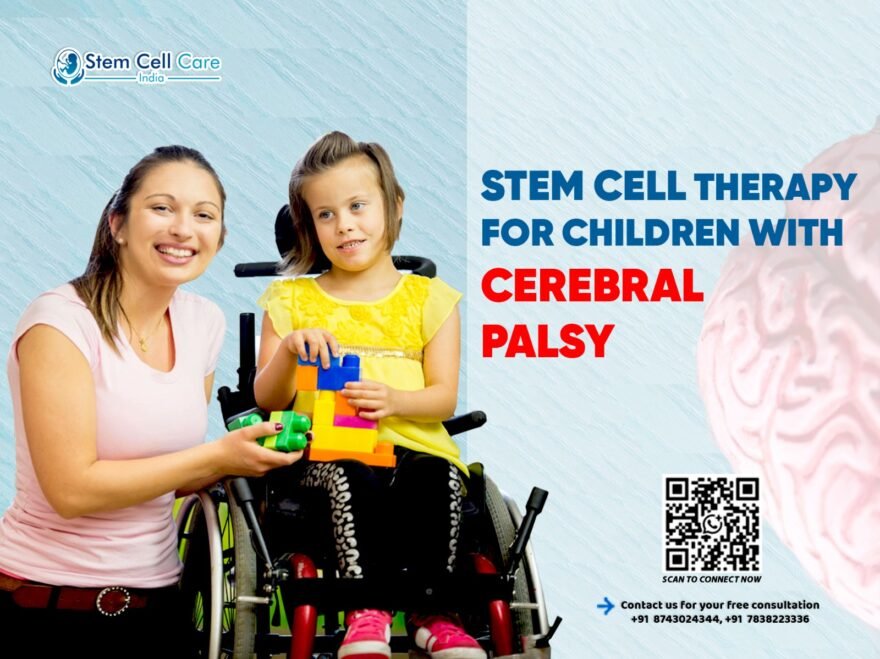All children should be able to grow up, play, and lead a full life, but for children with cerebral palsy (CP), it won’t be straightforward. CP is a damage that affects movement, muscle tone, and coordination due to brain damage before or at birth. A majority of children with CP struggle with walking, talking, or daily activities. These also take a toll on their families, both emotionally and financially.
Even though standard therapies like medication and physical therapy manage symptoms, they are not treatments for the condition. Stem cell therapy is studied as a new and promising option. Stem cell therapy uses special cells to replace or repair damaged brain tissue, hoping for improved function and a brighter future for children.
Brief Introduction About Cerebral Palsy
Cerebral Palsy (CP) is a condition that affects movement, balance, and posture. It occurs when an infant’s brain fails to develop normally or gets injured. This may occur before birth (prenatal), during birth (perinatal), or after birth (postnatal).
There are various types of CP:
- Spastic CP leads to tight muscles,
- Dyskinetic CP leads to jerky or uncontrollable movements,
- Ataxic CP involves balance and coordination problems,
- Mixed CP is a combination of the above.
Common signs are difficulty walking, talking, or using hands. Children can have learning difficulties, seizures, or difficulty with vision.
Physicians diagnose CP by using physical exams and brain scans. Treatment is physical therapy, speech therapy, and medication to aid in symptom management.
How Stem Cell Therapy Helps Children with CP?
Cerebral palsy (CP) is a neurological condition that disrupts movement and muscle coordination in children. Most children with CP have difficulty walking, communicating, or performing basic activities. Stem cell treatment is one of the new and advanced treatments. It can potentially enhance brain function and improve the lives of such children. The following are ways stem cell therapy helps:
- Repair Damaged Brain Cells: Stem cells have the ability to become other types of cells. In a child with CP, if they are given, they might repair the areas of the brain that are injured and responsible for movement and speech issues.
- Improves Muscle Strength and Control: Children with CP usually have weak or tight muscles. Stem cells could improve muscle movement and control, and children might be able to sit, walk, or grasp better.
- Reduces Brain Inflammation: CP is usually associated with swelling or damage in the brain. Stem cells carry inherent healing capabilities. They can shrink swelling and make the brain recover more effectively.
- Enhances Brain Communication: Stem cells can enhance the manner in which brain cells communicate with one another. This can lead to improved thinking, learning, and responding to the environment.
- Improved Quality of Life: Most families notice advancements in their child’s daily life following stem cell therapy. Children quickly begin eating well, sleeping well, and playing or attending school without discomfort.
Treatment Process For CP
Stem cell therapy is a new and promising treatment for children with cerebral palsy (CP). It is based on using healthy stem cells in repairing damaged brain tissues. This type of therapy gives hope to families looking for better means of controlling CP symptoms and improving the quality of life for their child.
- Eligibility Criteria for Children with CP
All children with CP can receive stem cell treatment. Doctors first check the age, health, and type of CP of the child. Children with mild to moderate types are better candidates. The child should not have serious infections or an immune deficiency.
- Pre-treatment Evaluation and Assessments
Before treatment begins, tests like brain scans, blood work, and a physical checkup are conducted by doctors. This is so that one may understand how the brain is affected. Tests are also done to ensure that the child is healthy enough to be treated.
- Steps of Procedure: Stem Cell Collection, Preparation, and Administration
Stem cells are taken from the child’s own bone marrow or from a donor. The cells are processed and cleansed in a lab. They are then introduced into the body, usually through the spine or veins. This is done in a hospital by trained doctors.
- Follow-up and Post-Treatment Care
After treatment, the child is closely monitored. Regular checkups, therapy, and rehab exercises are needed. These ensure monitoring of progress and the avoidance of side effects. Long-term follow-up provides optimal results.
Ending Note
Stem cell therapy gives new hope to children with cerebral palsy. It may help improve movement, speech, and daily activities. Though still being studied, early results are promising. With proper care and follow-up, this treatment can support a better quality of life for many children and their families.


